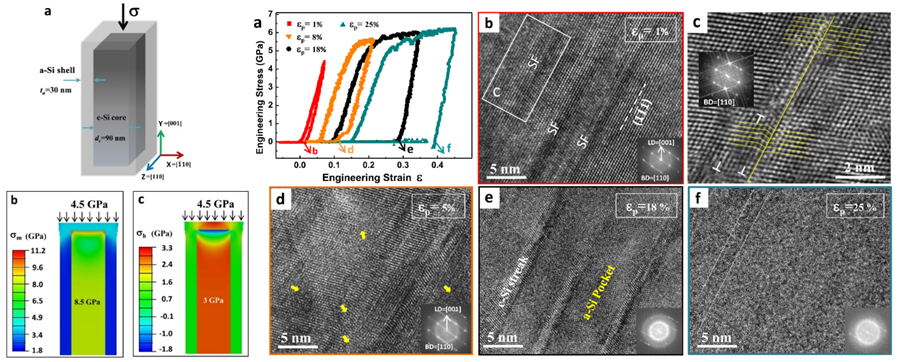Reported by Wang Yue-Cun
Silicon is no doubt the most amazing semiconductor material in today’s world and all issues about it have been receiving much attention. Stress-induced crystalline-to-amorphous transition in silicon has been widely observed under various mechanical loading conditions, for example, polishing during the manufacture of photovoltaic cell alter silicon’s crystal structure and degrade device performance. Despite of numerous efforts for decades, it remains controversial on the underlying amorphization mechanism due to the lack of direct experimental evidence.

Specially designed core-shell structure and its stress distribution (left). HRTEM images of the amorphization process under uniaxial strain (right).
Recently, the PhD student Yuecun Wang of CAMP NANO, XJTU-MSE, designed a system of submicron-sized pillars consisting of a crystalline silicon core encased in a nanoscale shell of amorphous silicon. Sharper insights into stress-induced crystalline-to-amorphous transition in silicon can be realized with crack-resistant micropillars by capturing the real-time images in progress. And a new mechanism of the plastic strain and stacking faults accumulation induced amorphization in Si was proposed. The project is supervised by Prof. Zhiwei Shan, Prof. Wei Zhang, Prof. Evan Ma and Prof. Ju Li from our faculty. Prof. Zhuo Zhuang and his PhD student Liyuan Wang from Tsinghua University also made a significant contribution to this work. This work has been published on the top research journal, NPG Asia Materials.
The article can be accessed at
http://www.nature.com/am/journal/v8/n7/full/am201692a.html


